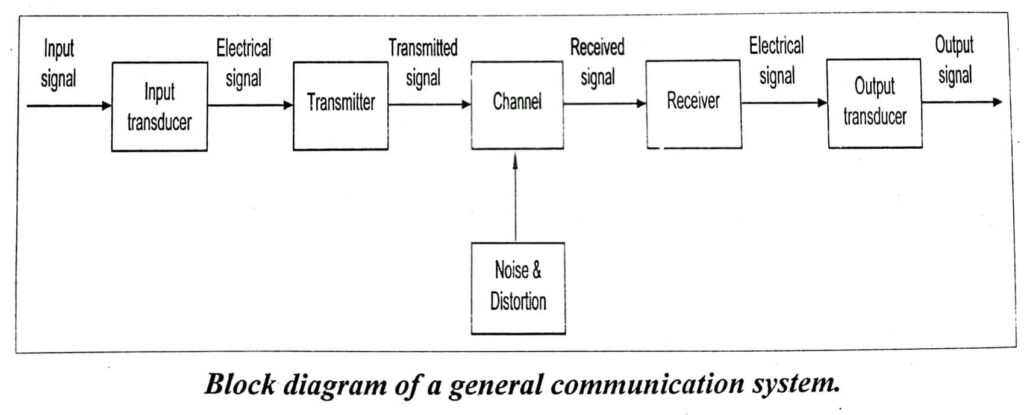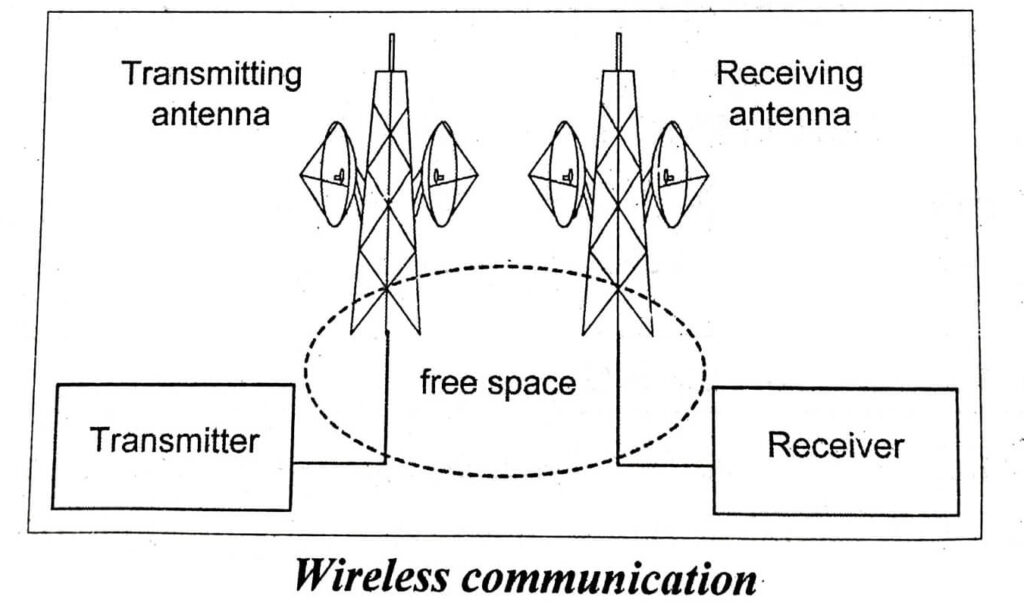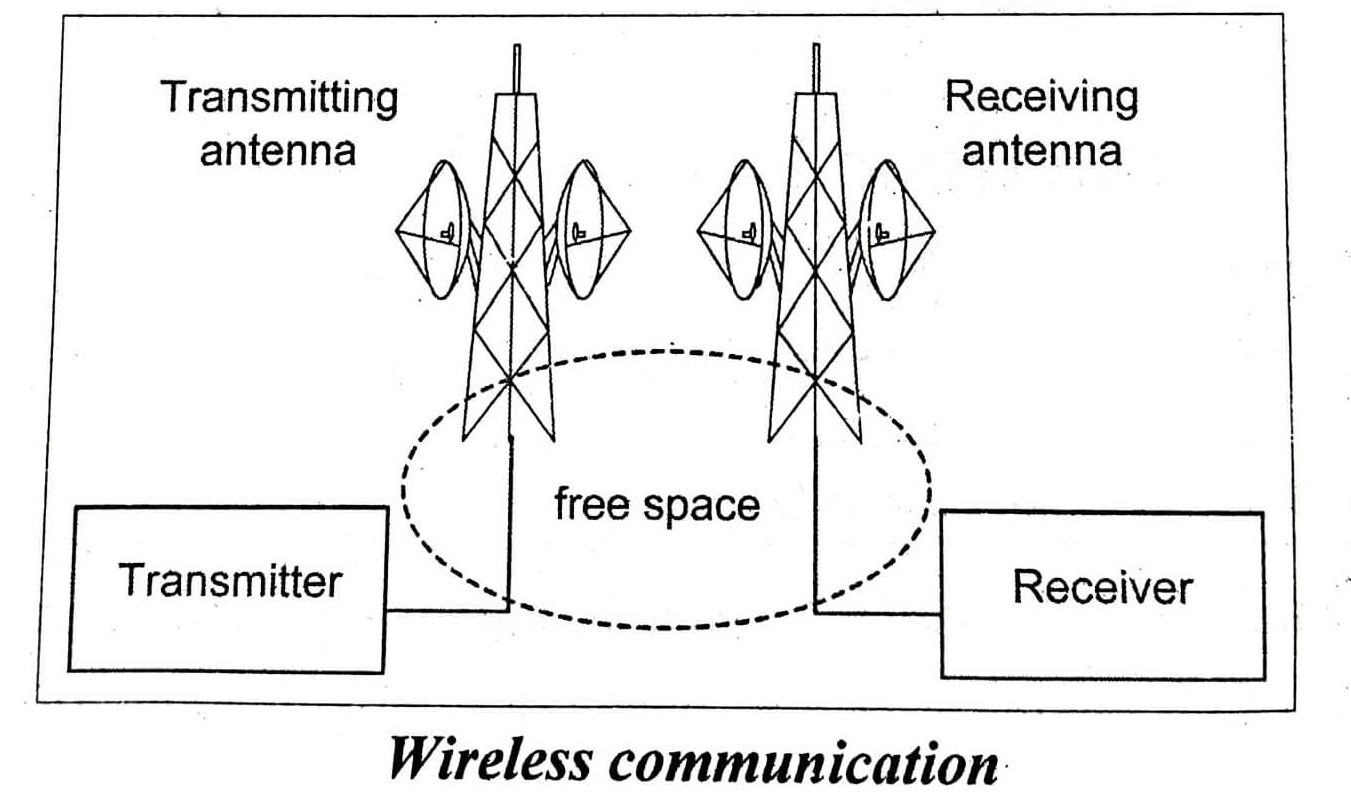A general communication system involves the transmission of information between two or more entities using a shared medium or channel. It typically consists of a sender that encodes a message, a transmission medium through which the message travels, a receiver that decodes the message, and a feedback mechanism to ensure accurate communication. The effectiveness of such a system depends on factors like encoding and decoding processes, the reliability of the transmission medium, and the ability to manage noise or interference.

The basic communication components are
- A transmitters,
- A communication channel (or) medium, and
- A reciver
(i) Information Source
The source originates a message. The information is basically the news, one wishes to convey. The original source information can be in an analog form, such as the human voice, music, and television picture or in a digital form, such as binary coded numbers and computer data.
The most common form of digital is binary, which has two levels (0s or 1s). If the information is non-electrical, it must be converted by an input transducer into an electrical form.
(ii) Transmitter
The transmitter is a collection of electronic components and circuits designed to convert the information (modify) into a signal suitable for transmission over a given communication medium for efficient transmission. This can be achieved through a process known as modulation.
In addition to that, it increases the power level of the signal. The power level should be increased in order to cover a long distance.
(iii) Communication Channel
The communication channel is the transmission medium by which the electrical signal is sent from the transmitter to the receiver. Depending on the type of communication channel, two types of communication systems will exist
(a) Wire (or) Line Communication
It used the physical communication mediums like the simple wires, coaxial cables, a waveguide (or) an optical fiber. Here, message transmission capability is limited but produces reliable communication.

(b) Wireless (or) Radio Communication

Here, the information signal is transmitted through free space in the form of electromagnetic (EM) waves called radio waves and are radiated from the transmitter in open space through a device called antenna. Examples: Radio (or) TV broadcasting, and satellite communication.
It is mostly used for long distant communication and the number of users (transmission capability) as well as wide coverage area can be achieved by increasing frequency range but interference is more.
(iv) Noise
Noise in one of the more serious problems in communication. Noise is random and unwanted electric signal which gets added to the desired transmitted signal in the communication channel and travels towards the receiver.
The noise accumulates along the communication channel and distorts the signal. The signal strength decreases while the noise level increases with the distance from the transmitter.
Distortion is the process of changing shape of the information signal that may mislead message signal instead of reaching the correct destination due to noise.
(v) Receiver
The main function of the receiver is to reproduce the original message from the distorted signal which contains information signal as well as noise that available at the input of it from the channel.
The receiver output is fed to the output transducer, which converts the electrical signal to its original message form and the destination is the unit to which the message is communicated.
The Signal-to-Noise Ratio (SNR) at the receiver is defined as the ratio of signal power to noise power, which is the parameter used to recover the original signal from distorted signal. When the noise level decreases, the signal level will be increased.
| Read More Topics |
| Magnetic field due to an electric current |
| Alternative and renewable energy sources |
| Electrical potential and EMF |






